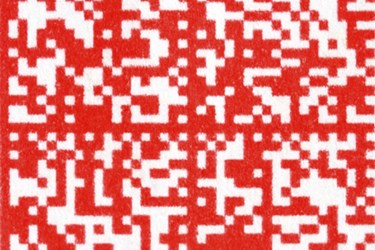Drug Serialization Reaching Consumers

By Louis Garguilo, Chief Editor, Outsourced Pharma

The Drug Quality and Security Act (DQSA) became U.S. law in November 2013. Title II of DQSA is the “serialization” section – the Drug Supply Chain Security Act –– which “outlines critical steps to build an electronic, interoperable system to identify and trace certain prescription drugs as they are distributed in the United States.”
Title II stipulates that ten years after enactment, “the system will facilitate the exchange of information at the individual package level about where a drug has been in the supply chain.” There are three main goals of serialization:
- Enable verification of the legitimacy of the drug product down to the package level.
- Enhance detection and notification of illegitimate products in the supply chain.
- Facilitate efficient recalls of drug products.
 Three years into the initiative, drug manufacturers, packaging service providers and industry organizations are doing one or a combination of: (a) working with the FDA to sketch out a clear serialization system; (b) taking their own systemic steps to implement traceability; and/or (c) hoping the day of reckoning fades further into the future via an extension as the ten-year deadline closes in.
Three years into the initiative, drug manufacturers, packaging service providers and industry organizations are doing one or a combination of: (a) working with the FDA to sketch out a clear serialization system; (b) taking their own systemic steps to implement traceability; and/or (c) hoping the day of reckoning fades further into the future via an extension as the ten-year deadline closes in.
Because Sharp Packaging Solutions is one of the companies that fall firmly into category (b), Gaurav Banerjee is a very busy person. He’s a veteran of Merck who joined Sharp in 2012, currently serving as Director, Technical Services - US & EU. “Serialization is the additional information – the 2D data-matrix code and human readable information – that we’re putting on packaging, whether it’s for anti-counterfeiting purposes, to meet regulatory requirements, or for value-added features for drug manufactures,” explains Banerjee at Sharp’s offices near Allentown, Pennsylvania.
For example, Sharp has rolled out a “5-level aggregation capability,” of which we’ll take a more detailed look in a moment. First, though, I ask Banerjee for some evolutionary elucidation on serialization.
The Dawn Of Serialization
“You can actually trace the encoding of information on consumer goods back to the 1970s, when barcoding started with UPC codes in the food industry,” Banerjee explains. However, it wasn’t until about a decade ago that the U.S. pharma industry got its first strong whiff of what we’d call serialization, when the state of California contemplated “e-pedigree laws,” now usurped by the federal DQSA.
Also about a decade ago, we saw growing excitement around radio frequency identification tags, or RFID. “Wal-Mart was pioneering that field, utilizing nickel-sized transmitters to facilitate the automation of goods received in large-scale warehousing operations,” recalls Banerjee. RFIDs, though, were not as cost-effective as rapidly developing data-matrix codes, which spurred today’s ubiquitous “barcodes” on consumer goods. These “1D barcodes” are precursors to more information-rich, 2D-technologies. These newer technologies are the initial enablers of a real “serialization” in the pharma industry.
“The barcodes on your cereal box have vertical bars with a variability of one dimension,” explains Banerjee. “There’s a limit to the information you can encode. A two-dimensional (2D) data-matrix code looks like a scattering of pixels, and provides vastly more information. This is now useful for pharmaceutical packaging, because manufacturers and regulators require the encoding of a product identifier – known as a GTIN [Global Trade Identification Number], serial number to that package, lot number, expiry date, and other information depending on which markets it’s intended for.”
From 1 Dimension To 5 Levels
Fast forward to 2016: Sharp can now provide “a degree of aggregation up to five levels,” says Banerjee. He has us imagine a drug store that receives delivery of cases of a common medication. These cases might originate from multiple pallets at warehouses, or ‘logistical units for shipment.’ The drug-store customer purchases one of the multiple cartons that comes from a case.
“Aggregation associates the number applied to those individual cartons that the consumer purchases, with the case that it came out of,” explains Banerjee. “The case has a number to reference all the cartons that were within it. The case numbers are also aggregated to a pallet. The pallet also can have a number that can be scanned, indicating further that these cases are from this pallet. It creates a parent-child relationship between the different levels of packaging.”
In fact, Banerjee says his company now can “aggregate to the individual blister-cavity level,” bringing serialization directly into the lives of patients and customers. This means that, for example, when a mother returns home from the drug store and opens a carton which contains several blister packs with multiple pills in each, there’s a 2D data matrix encoded on the back of each blister cavity so each pill is uniquely identifiable.
“It’s individual blister cavity to blister card, to carton to case to pallet, a total of five levels of aggregation, a comprehensive application of serialization,” says Banerjee. “At the packaging line, Sharp applies 900 serial numbers per minute to enable serialization to this extent.”
The DQSA From Here
Meanwhile, the first of incremental milestones set by the DQSA was triggered in 2015. Essentially, it obligates manufacturers to include specific “bill of lading information,” whereas previously there weren’t transaction-specific requirements for this documentation. A bill of lading now must provide information explaining exactly what goods are being transported, a full history stating where those goods have been previously – including all supply chain partners – and a statement serving as a disclaimer to the effect that the carrier of the goods or the manufacturer authenticates and vouches for their authenticity. “This is a basic step by the FDA to further prevent counterfeiting,” comments Banerjee.
The next step [scheduled for November 2017] is the actual application of unique numerical identifiers to each salable unit. According to Banerjee, this will move the industry toward the levels of serialization we’ve described above. “Manufactures should be able to say, ‘This is product A, I have X number of these, and each separate one I sell to a consumer can be identified as distinct from another in that same batch.’ That’s building on the ultimate goal of full product traceability, which should be reached in 2023, ten years from the enactment of the DQSA.
“Eventually,” says Banerjee, “I’d envision we’re heading towards some sort of application or internet-based system by which the pharmacist, dispensing physician or consumer can look up where the product has been.”
In our following article, we’ll deal specifically with this final point – the storage, management, accessing and protection of all this data – and ask Banerjee about a few other topics regarding serialization.
